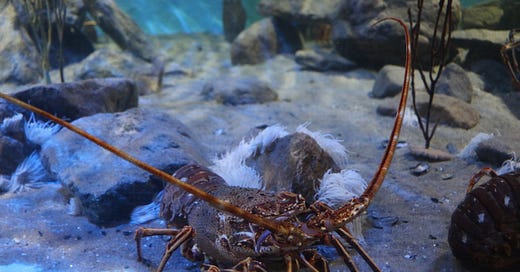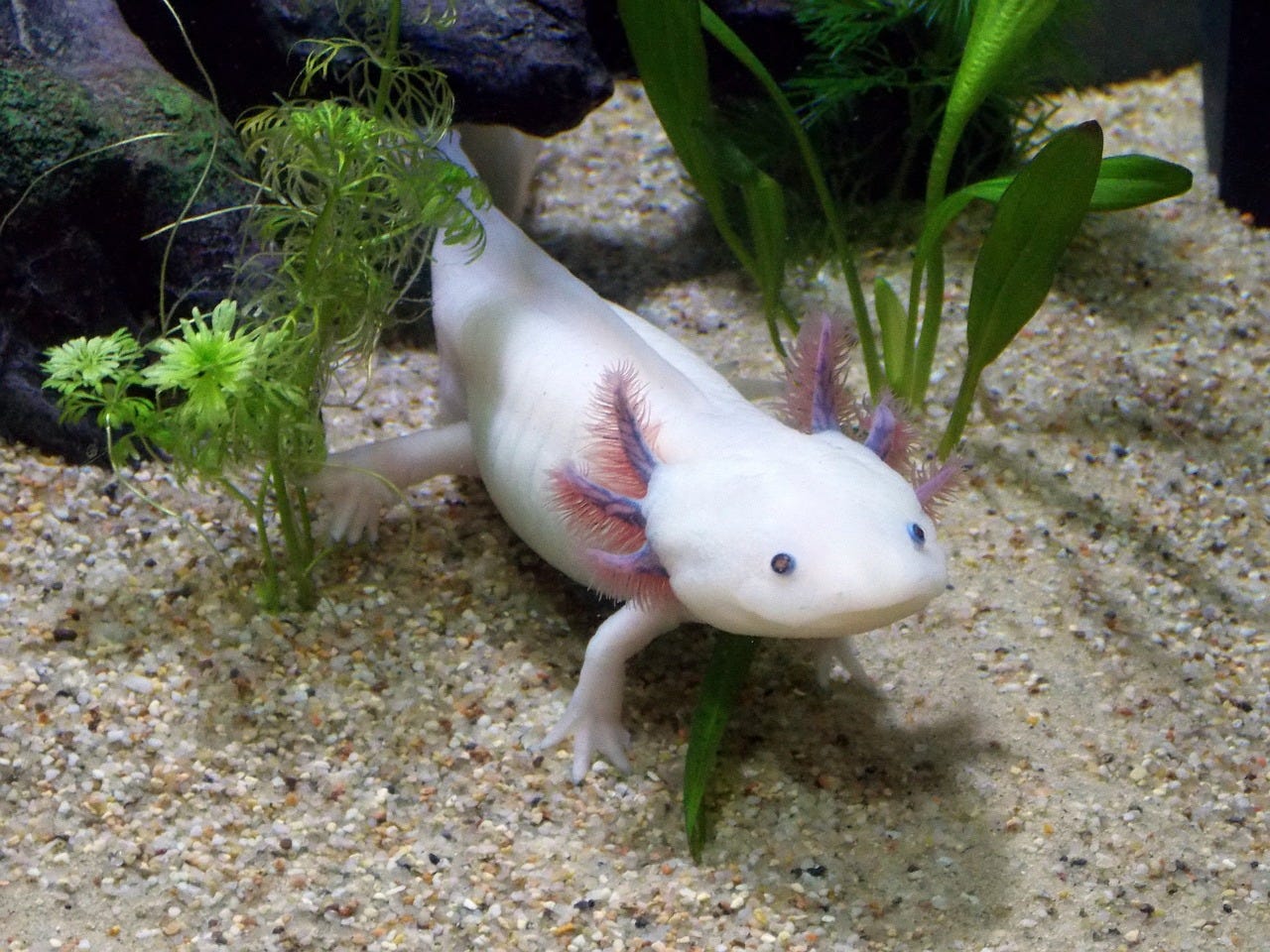Humans become increasingly weaker in our oldest years. Our bone density decreases, muscle performance nosedives, and joints become stiffer. This is the natural progression for our species, and many of our close relatives.
However, this is not what happens with lobsters. They continue to grow larger and stronger.
Lobster Moulting
Of course, there are caveats as there often are. As lobsters grow, they moult. This is a process in which they shed off their exoskeleton, in order to grow a more spacious one.
This is necessary for their continued health as they grow, but this is also when they are at their most vulnerable to predators, with their soft, exposed outsides.
Let’s briefly summarize the process. First, a hormonal signal softens their exoskeleton at their carapace, which is the place between their tail and abdomen. During this time, the lobster intakes excess water to help push the outer exoskeleton off. The lobster must then squeeze every part of its body outside of its skeleton, from each leg to each eyeball. This process takes around half an hour. At this point, there is an incredibly soft exoskeleton underneath, which begins to calcify. To ensure that the new exoskeleton leaves enough room for growth, the lobsters resume the water intake, increasing the size of their extremities, which will then fill with tissue over the next few months.1 The first few days, the lobster is completely vulnerable, and hides. Even after that, it takes a few months for the exoskeleton to completely harden again.
How does this relate to the overall picture? Two main points to be considered here:
Lobsters can regrow limbs, eyeballs, everything — comes in when they moult.
This process does not reverse. Later in their life, moulting comes more and more infrequently, yet continues until their death.
If lobsters don’t die from physical weakening caused by aging, what prevents them from taking over the ecosystem? Predators, health diseases, and exhaustion are primary causes. Not only does building a new shell bring the risk of predation while the lobster is soft and vulnerable, but it is also a very calorie-intensive process. And sometimes, the lobster simply cannot acquire the energy required.
Lobster Regeneration and Longevity
Telomerase
Lobsters have a more persistent supply of telomerase than humans do: the enzyme that rebuilds your telomeres. As a refresher, telomeres are the repetitive, non-coding DNA segments at the end of the chromosome. They provide an extra buffer during cell division to ensure that none of the coding segments fail to duplicate. Humans also have telomerase, but somatic cells typically do not express it due to not expressing telomerase reverse transcriptase (TERT). 2
One particular study has concluded that “high telomerase activities were detected in all lobster organs”,3 and has determined the same in rainbow trout. These fish grow indeterminately throughout their life, cells rarely reaching senescence. They were also found to have high telomerase activity.4
There are advantages to telomere shortening, of course. Cells with shorter telomeres are terminated during a cell division checkpoint. Cancer cells, with their rapid growth, are prone to shortening telomeres more than other cells in the body. The suppression of TERT activity and low telomerase activity may be a cancer-prevention mechanism in humans.5
Notably, telomerase is simply one of the potential factors for slowing down aging, and the literature suggests mixed confidence on how much it truly contributes to the aging process. For illustration, consider that adult mice have much higher telomerase activities than humans, yet have substantially lower lifespans.
Regeneration
Lobsters have the enviable ability to lose a claw or tail, and regrow it during intermolt. This is not unique to them: starfish and sponges, amongst many, have the same ability.
To focus on lobsters, their regeneration limbs are not perfect. The newly regenerated limbs post-moult are about 68% the original size, and also have 30% less axons.6 The limbs continue to grow as the lobster proceeds in its life.
There are a combination of signals that allow this to occur; and yet the process is not perfect. Researchers tried repeatedly amputating the same limb after it regrew. They found that the size remained approximately constant, while the “regenerative capacity for sensory inner- vation declined progressively to 59%, 37%, and 26%'“.
Notably, the regeneration signal is not necessarily sent if the limb is just damaged. In this situation, the lobster might cut off the offending claw or antenna itself, in order to begin the process. Lobsters also have the privilege of sacrificing a limb or two to escape from a predator’s grasp, and have it grow back.
There is a surprising lack of studies on the mechanisms of lobster limb regeneration, although there are some interesting ones on different animals:
Crayfish: https://pubmed.ncbi.nlm.nih.gov/34165197/
Crab: https://www.sciencedirect.com/science/article/pii/0022098173900452
Axolotl: https://www.ncbi.nlm.nih.gov/pmc/articles/PMC7214127/
Conclusion
There’s always something to learn from different organisms to better understand humans. We can observe telomerase activity in lobsters and take a better look at their regenerative capabilities. There are other animals as well; we’ve had a study looking at moon jellyfish, fruit flies and adult mice, using conserved pathways to induce limb regeneration.7 However, that’s an exploration for another time.
https://mlcalliance.org/all-about-lobster/lobster-1-4-molting/#shell
https://www.ncbi.nlm.nih.gov/pmc/articles/PMC1933587/
https://doi.org/10.1016/S0014-5793(98)01357-X
https://pubmed.ncbi.nlm.nih.gov/9742964/
https://www.ncbi.nlm.nih.gov/pmc/articles/PMC1933587/
https://pubmed.ncbi.nlm.nih.gov/3235998/
https://elifesciences.org/articles/65092




